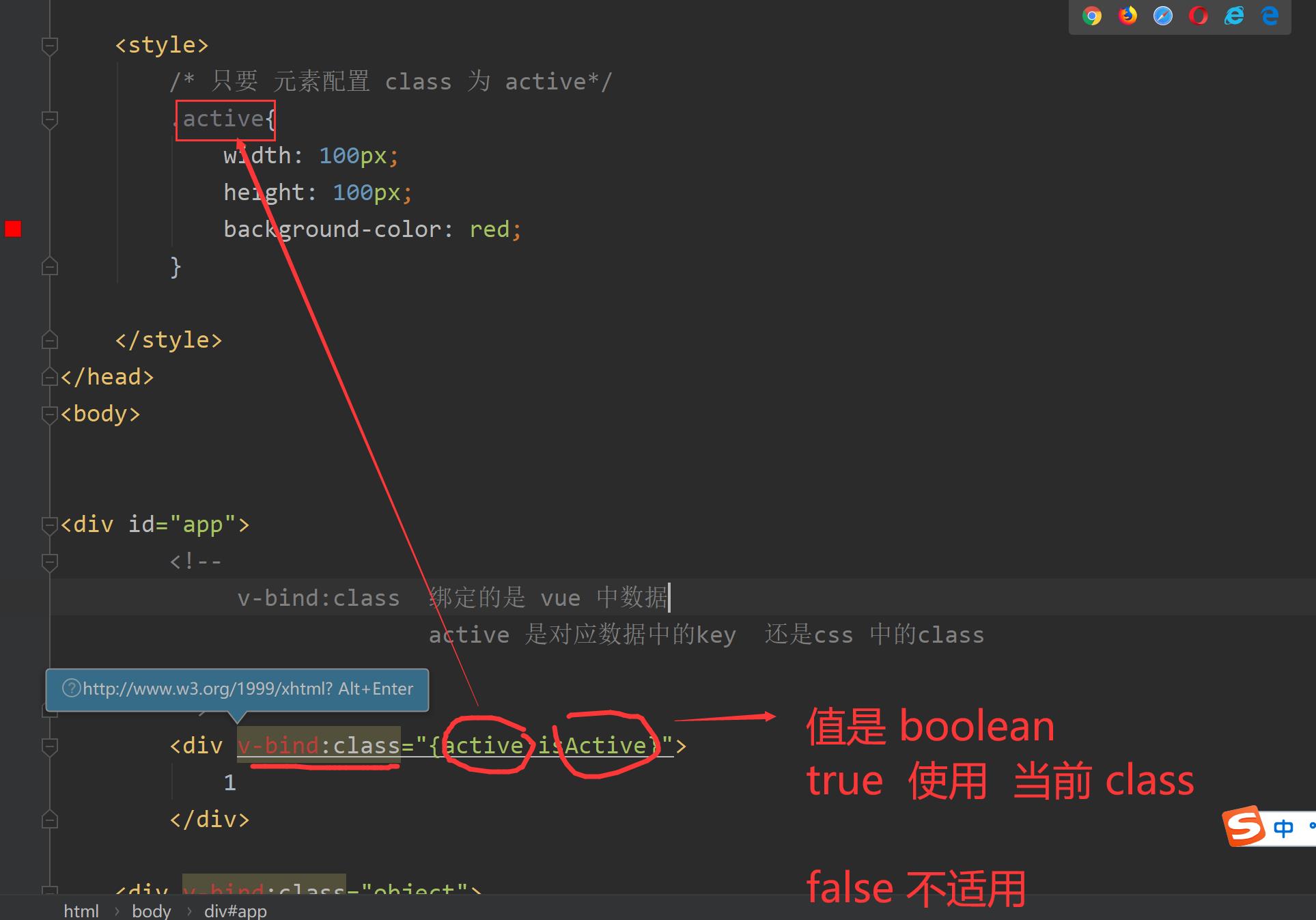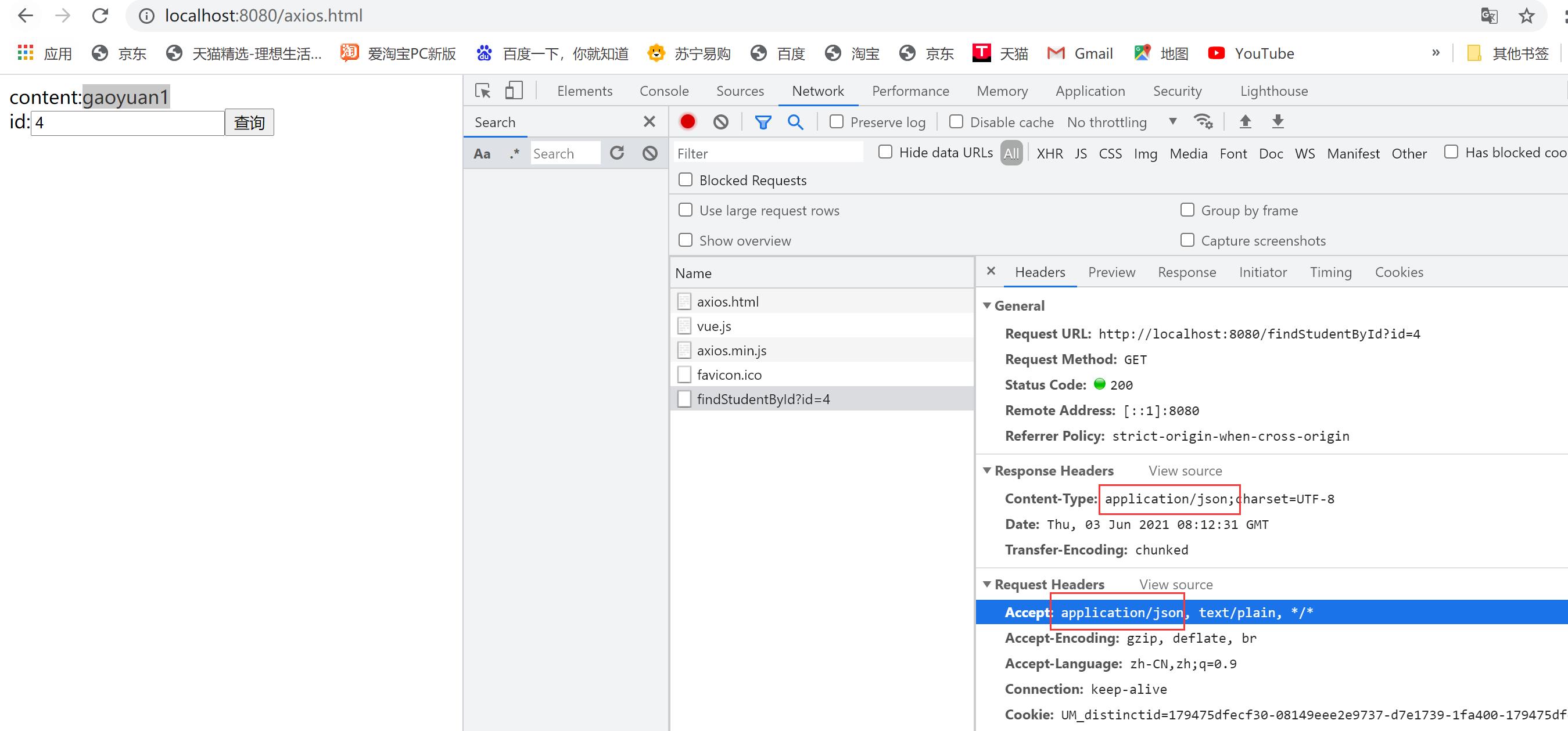Vue
Posted xue_yun_xiang
tags:
篇首语:本文由小常识网(cha138.com)小编为大家整理,主要介绍了Vue相关的知识,希望对你有一定的参考价值。
一、监听属性
watch 监听属性数据的变化
<!DOCTYPE html>
<html lang="en">
<head>
<meta charset="UTF-8">
<title>Title</title>
<script src="js/vue.js"></script>
</head>
<body>
<div id="app">
count:count<button @click="incread()">incread</button>
<br>
千米:<input type="number" v-model="kilometer"><br>
米:<input type="number" v-model="meter">
</div>
<script>
var app = new Vue(
el: '#app',
data:
count: 0,
kilometer:0,
meter:0
,
methods:
incread: function ()
this.count++;
,
watch:
// //可以在watch代码块中监控count数据的变化
// count:function (val)
// //获取count最新的值
// console.log("count:" + val);
//监控kilometer数据变化
kilometer:function (val)
console.log("kilometer:" + val);
this.meter = val * 1000;
,
meter:function (val)
console.log("meter:" + val);
this.kilometer = val / 1000;
)
app.$watch('count',function (nval,oval)
//获取count最新的值
console.log("count:" + nval);
console.log("count-最新数据:" + nval + "----旧数据:" + oval);
)
</script>
</body>
</html>
二、样式绑定
v-bind:class 绑定 css 中的class
<!DOCTYPE html>
<html lang="en">
<head>
<meta charset="UTF-8">
<title>Title</title>
<script src="/js/vue.js"></script>
<style>
/* 只要 元素配置 class 为 active*/
.active
width: 100px;
height: 100px;
background-color: red;
</style>
</head>
<body>
<div id="app">
<!--
v-bind:class 绑定的是 vue 中数据
active 是对应数据中的key 还是css 中的class
-->
<div v-bind:class="active:isActive">
1
</div>
<div v-bind:class="object">
2
</div>
<div v-bind:class="computedObject">
3
</div>
</div>
<script>
var vm = new Vue(
el:'#app',
data:
isActive:true,
object:
active:true
,
computed:
computedObject:function ()
return
active:true
,
methods:
,
watch:
)
</script>
</body>
</html>

三、Component
组件
在java 万物皆对象,对象都是有类创建来的,类对万物的描述和封装
vue 组件 是最常用模块,很多时候都需要用到前端代码块的复用,将公共代码块的抽离 就是 是我们的组件
组件分为两类:
- 全局组件:在工程中任何地方都可以使用
- 局部组件:只能在当前 vm 实例中使用
1、全局组件
<div id="app">
<!--
3. v-bind:msg=“vmMsg” 绑定自定义组件中的参数 和 vm 实例中的数据
vmMsg ------ > msg
-->
<componentmsg v-bind:msg="vmMsg"></componentmsg>
</div>
<!--
1 先创建一个模板
-->
<template id="template1">
<div>
msg:msg
</div>
</template>
<script>
// 2声明组件
// 声明 自定义组件是如果名字有大写字母 自动给转为消息 一定注意
Vue.component('componentmsg',
template:'#template1',// 组件对应的模板 template1
props:["msg"] // 声明自定义组件需要传递的参数
)
var vm = new Vue(
el:"#app",
data:
vmMsg:"五分钟后下课"
)
</script>
2、局部组件
<h1>局部组件 </h1>
<div id="app">
<!-- 第一次应用组件-->
<customdiv></customdiv>
<h1>sdfsdfsdffffff</h1>
<customdiv></customdiv>
<customdiv></customdiv>
</div>
<!--
定义一个模板 相当于一个 div
template 末班中只能 有一个 根节点 <div> <h1>
一般请情况我们只是用div 进行包裹
-->
<template id="template1">
<div>
<h1>自定义模块</h1>
<h3>sdfasdfsd</h3>
<div>sdfasdfasd</div>
</div>
</template>
<script>
var object =
template:'#template1'
var vm = new Vue(
el:'#app',
data:
,
components:
// 一个组件
'customdiv':object
,
computed:
,
methods:
,
watch:
)
</script>
组件传递参数
<!DOCTYPE html>
<html lang="en">
<head>
<meta charset="UTF-8">
<title>Title</title>
<script src="/js/vue.js"></script>
</head>
<body>
<h1>全局组件 </h1>
<div id="app">
<!-- 第一次应用组件-->
<customdiv v-bind:title="vmTitle" v-bind:title2="vmTitle2" v-bind:content="vmContent"></customdiv>
<h1>sdfsdfsdffffff</h1>
<customdiv v-bind:title="vmHeader" v-bind:title2="vmHeader2" v-bind:content="vmHeaderContent"></customdiv>
</div>
<!--
定义一个模板 相当于一个 div
template 末班中只能 有一个 根节点 <div> <h1>
一般请情况我们只是用div 进行包裹
-->
<template id="template1">
<div>
<h1>title</h1>
<h3>title2</h3>
<div>content</div>
</div>
</template>
<script>
/*
* Vue 声明全局组件 所有vm 实例都可以使用
* 组件名称 customdiv
* template 设置组件对应的模板
* */
Vue.component('customdiv',
template:'#template1',
props:["title","title2","content"] // 声明组件中可以传递参数
)
var vm = new Vue(
el:'#app',
data:
vmTitle:'儿童节快乐',
vmTitle2:'每人一个棒棒糖',
vmContent:"xxxxxxxxxxxxxxxxxxxxx",
vmHeader:'端午节安康',
vmHeader2:'每人一个粽子',
vmHeaderContent:"xxxxxxxxxxxxxxxxxxxxx"
,
computed:
,
methods:
,
watch:
)
</script>
</body>
</html>
四、生命周期
servlet实例生命周期:实例化 ----》初始化(init)–>服务(service)–>destory()销毁
vue实例生命周期:实例化(create)—>绑定将vue实例和el 对应的节点(mount)—》如果数据变化(update)----->销毁(destory)
声明周期对应的方法:8个
beforeCreate() 实例化前
created() 实例化后
beaforeMount() 挂载前
mounted() 挂载后 初始化数据,发生在当前位置
beforeUpdate():更新前
updated():更新后
beforeDestory():销毁前
destoryed():销毁后
<!DOCTYPE html>
<html lang="en">
<head>
<meta charset="UTF-8">
<title>Title</title>
<script src="js/vue.js"></script>
</head>
<body>
<div id="app">
count:count <button @click="incread()"> count 自增1 </button>
<br><button @click="destoryclick()"> 销毁当前实例</button>
</div>
<script>
var vm = new Vue(
el:"#app",
data:
count:0
,
methods:
incread:function ()
console.log("自增1")
this.count++;// this 当前vue 实例
,
destoryclick:function ()
// 所有vm 实例内的方法调用都要加$
this.$destroy()
,
created()
console.log("实例创建后")
,
mounted()
// 所有 vue 网络请求数据 ,初始化界面数据 在 mounted内设置
console.log("挂载绑定后")
,
updated()
console.log("界面更新后")
,
destroyed()
console.log("实例销毁后")
)
</script>
</body>
</html>
五、路由
路由:路由器分发网络
vue路由:根据不同的路径响应不同的界面
router:路由管理者 负载分发请求
route:一条路由 包含 路径 组件 名字 (一个路径 +一个界面(组件))
routes:多条路由组成数组

1、引入路由依赖
<script src="js/vue.js"></script>
<!-- 必须 在 vue.js 下面-->
<script src="js/vue-router.min.js"></script>
2、编写路由实例
<!DOCTYPE html>
<html lang="en">
<head>
<meta charset="UTF-8">
<title>Title</title>
<script src="js/vue.js"></script>
<!-- 必须在vue.js下面-->
<script src="js/vue-router.min.js"></script>
</head>
<body>
<div id="app">
<!-- 5 使用路由-->
<p>
<!-- 表示当前路由要跳转哪一个页面-->
<router-link to="/home">go home</router-link>
<router-link to="/product">go product</router-link>
</p>
<!-- 用来展示不同路由显示的页面-->
<router-view>
</router-view>
</div>
<script>
var Home =
template:"<div>Home</div>"
var Product =
template:"<div>Product</div>"
// 2. 一组路由
var routes = [
path:"/",//绑定路由首页
component:Home
,
path:"/home",
component:Home
,
path:"/product",
component:Product
]
// 3. VueRouter 管理路由
var router = new VueRouter(
routes:routes
)
var vm = new Vue(
el:"#app",
data:
,
router // 4. 将router 传给 vue 实例
)
</script>
</body>
</html>
六、网络请求
vue 异步请求:
vue-resource:vue 1.0版本默认的请求 方式 ,到2.对vue 进行瘦身
vue-axios(ajax): 当前vue 请求方式
axios 单独的网络请求组件,vue整合到vue
以前异步请求

什么是 axios?

<!DOCTYPE html>
<html lang="en">
<head>
<meta charset="UTF-8">
<title>Title</title>
<script src="js/vue.js"></script>
<!-- 必须在vue.js下面-->
<script src="js/axios.min.js"></script>
</head>
<body>
<div id="app">
content:content
<br>
id:<input type="number" v-model="id"><button @click="getStudentById">查询</button>
</div>
<script>
var vm = new Vue(
el:"#app",
data:
content:'xxx',
id:2
,
methods:
getStudentById:function ()
alert("即将查询id:" + this.id);
axios(
url:'findStudentById',
methods:'get',//设置请求方式,post也可以
params:
//id:vm.id
id:2
).then(function (response) //接收返回的数据
//response.data------后台返回的数据
alert("data" + JSON.stringify(response.data));
//this指axios自己,不是当前vm实例
//this.content = response.data;
vm.content = response.data;
).catch(function (error)
alert("服务器异常:" + error);
)
,
mounted()//当页面挂载完成后,初始化数据
this.getStudentById();
)
</script>
</body>
</html>
以上是关于Vue的主要内容,如果未能解决你的问题,请参考以下文章